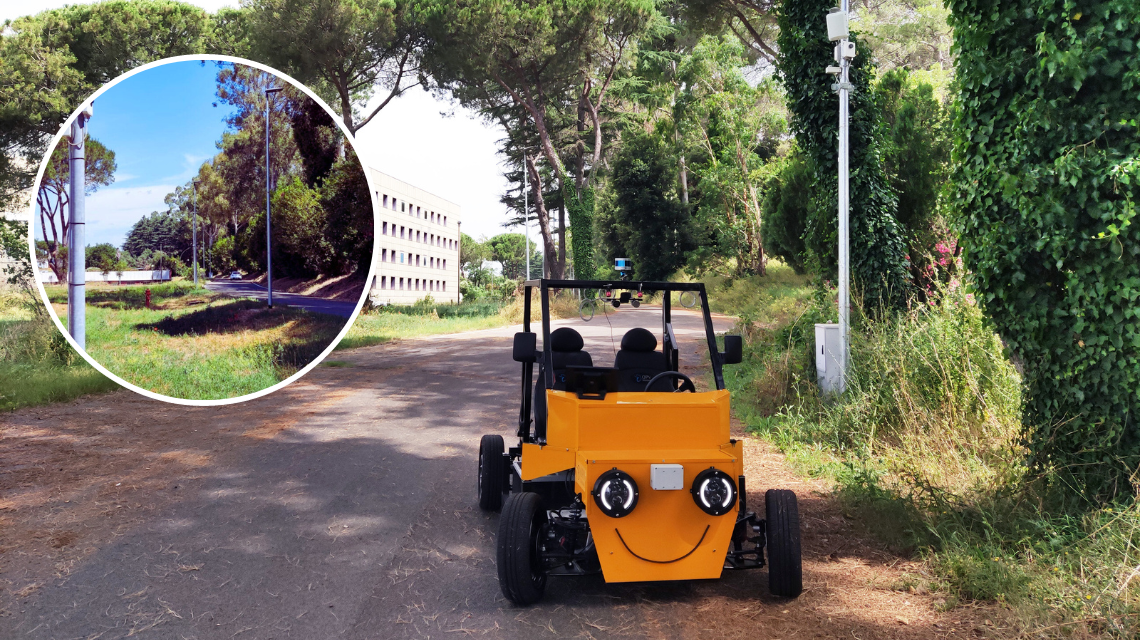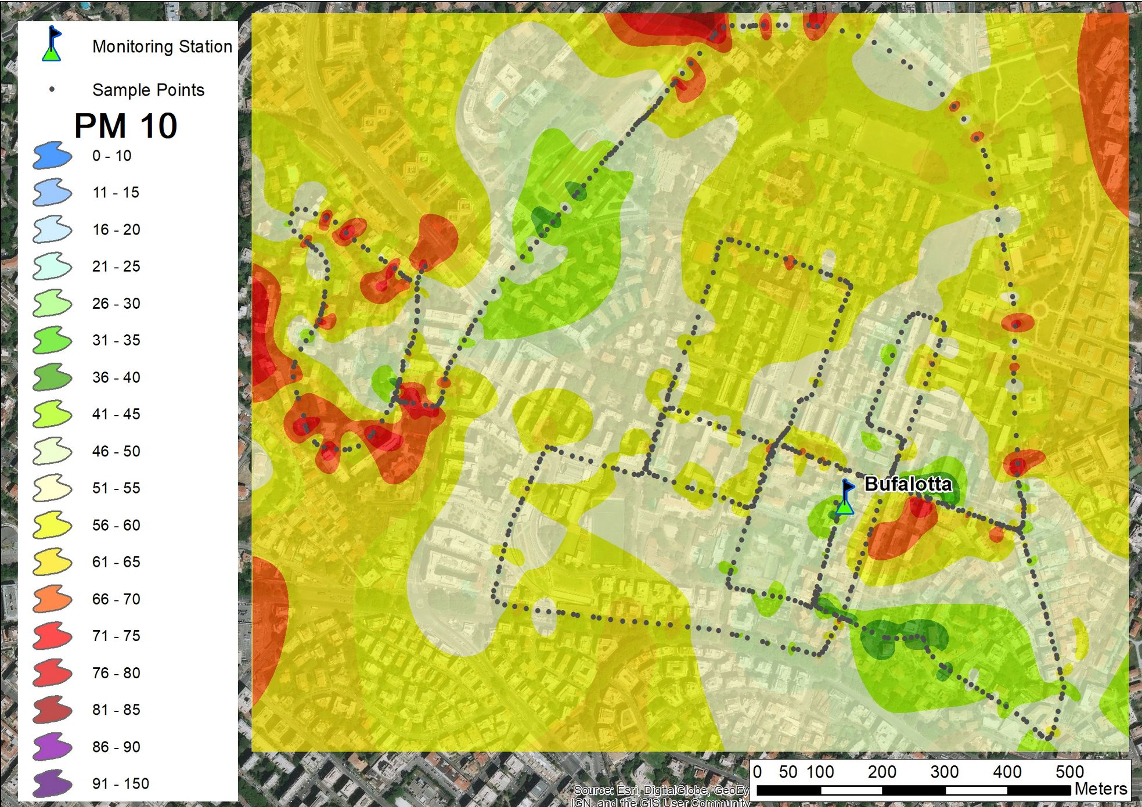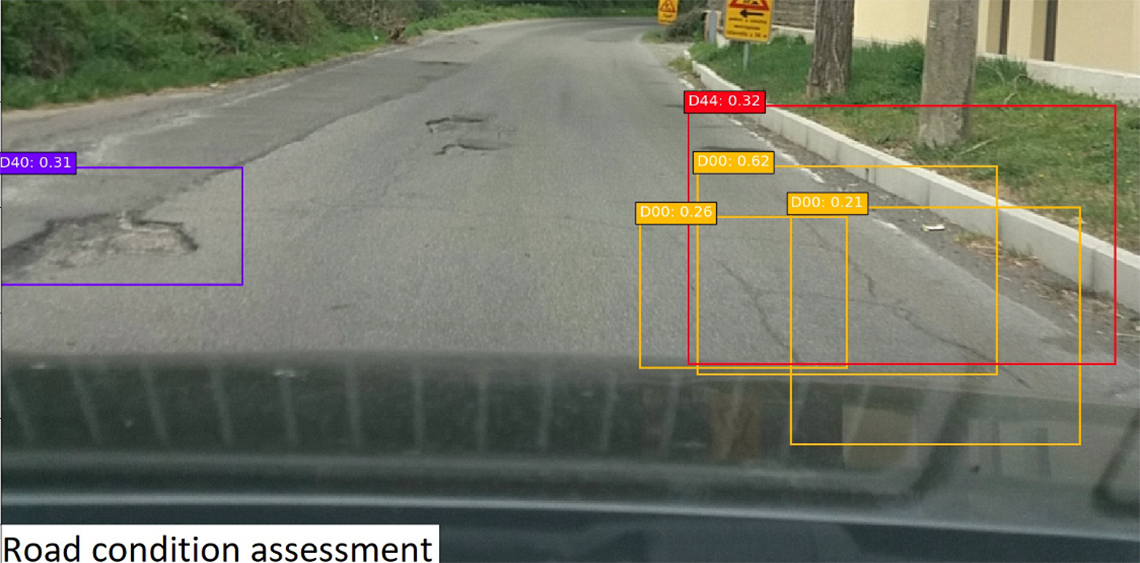Italian National Agency for New Technologies, Energy and Sustainable Economic Development

Transport: Smart streetlights and self-driving vehicles in ENEA's Smart Road
ENEA, as part of the “Electrical System Research” (RSE) program funded by the Ministry of the Environment and Energy Security, has created in the Casaccia Research Center (Rome) an actual ‘smart road’ with improved safety, traffic flows and driving comfort, with benefits in terms of energy saving and sustainability. The Smart Road project provides for the implementation of a self-driving electric vehicle and 22 hi-tech street lamps guaranteeing a dense communication network with an innovative processing and decision support infrastructure.
Just over half a kilometer long and 6 meters wide, the ENEA smart road gathers data from passing vehicles and through 22 smart poles and directs them towards an innovative urban processing and decision support system called CIPCast (Critical Infrastructure Protection risk analysis and forecast), based on a GIS (Geographic Information System). CIPCast creates maps in real time to manage alerts or for appropriate charging planning (figure 1). Communication can also take place from CIPCast to the vehicle via messages notifying dangerous events, like problems on the road network resulting, for example, from extreme weather events or disasters.
The electric vehicle is equipped with sensors detecting position, speed, particulate matter, state of charge of the battery or the road surface (figure 2), while cameras, Bluetooth buoys and connection equipment mounted on 22 smart street lamps observe and measure vehicular and pedestrian traffic density, natural lighting and pollutant concentrations. This allows, as road traffic and weather conditions vary, to adjust light intensity of lighting fixtures with benefits in terms of energy saving and lower environmental impact. To implement the smart functions of the road, wi-fi access points have also been installed on some poles, connected to the ICT network of the Casaccia Center via optical fibre, to communicate with the autonomous vehicle and exchange data relating to the experimentation.
“Our laboratory has worked on vehicle robotisation, development of on-board sensors and coordination of activities, in collaboration with the two laboratories for Analysis and Protection of Critical Infrastructures and Smart Cities and Communities”, pointed out the manager of the autonomous driving vehicle Sergio Taraglio, researcher at the Robotics and Artificial Intelligence Laboratory. “We will shortly analise urban sound with AI techniques to map noise pollution and provide the vehicle with emergency response equipment, while future research concerns wireless charging and smart mobility linked to the concept of ride sharing, i.e. the possibility of using autonomous vehicles to share urban routes, with the final objective of developing highly topical concepts and solutions, which represent a challenge to improve the liveability of our cities ”, concludes Taraglio.
“Transport is the second most polluting sector in Europe, whose growing emissions require additional effort to reach the EU net-zero emission target by 2050, as indicated in the European Green Deal”, pointed out Claudia Meloni at the ENEA Smart Energy Division and contact person for the Smart Road project within the RSE program. “In this context, technological innovation can make a fundamental contribution by allowing us to implement monitoring, management, strategic planning and, above all, analysis and processing of large quantities of data relating to territorial security and technological infrastructures (like electrical and communication systems) and, more generally, information regarding the different aspects of the urban environment, not only to reduce emissions but also to make cities safer and more sustainable".


